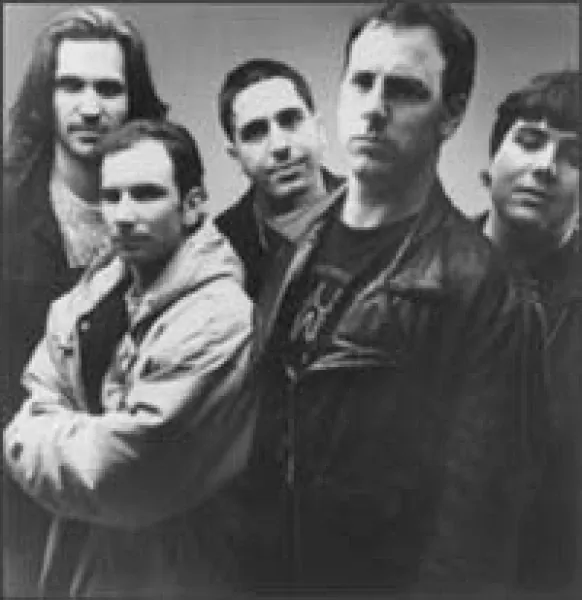
Bad Religion
Top Bad Religion albums
Top Bad Religion lyrics
21st Century Digital Boy (lyrics)
Bad ReligionA Long Way To The Promised Land
Bad ReligionBad Religion biography
Out of all of the Southern Californian hardcore punk bands of the early '80s, Bad Religion stayed around the longest. For over a decade, they retained their underground credibility without turning out a series of indistinguishable records that all sound the same. Instead, the band refined their attack, adding inflections of psychedelia, heavy metal, and hard rock along the way, as well as a considerable dose of melody. Between their 1982 debut and their first major-label record, 1993's Recipe for Hate, Bad Religion stayed vital in the hardcore community by tightening their musical execution and keeping their lyrics complex and righteously angry.br /br /Bad Religion formed in the northern suburbs of Los Angeles in 1980, comprising guitarist Brett Gurewitz, vocalist Greg Graffin, ba**ist Jay Bentley, and drummer Jay Ziskrout. Gurewitz established his own record company, Epitaph, to release the band's records. Between their self-titled EP and their first full-length record, Pete Finestone replaced Ziskrout as the group's drummer. Into the Unknown, their debut album, was released in 1983 and gained them some attention on the national U.S. hardcore scene. After its release, the group's lineup changed, as ba**ist Paul Dedona and drummer Davy Goldman joined the group.br /br /In the meantime, the band's lineup was undergoing some more shakeups. Gurewitz had to take 1984 off to recover from various substance abuse problems, leaving Graffin as the band's only original member. In addition to Graffin, the 1984 incarnation of the band featured former Circle Jerks guitarist Greg Hetson, ba**ist Tim Gallegos, and returning drummer Pete Finestone. Bad Religion's next release, the harder, punkier Back to the Known EP restored faith among the group's devoted fans. After its release, the group went on hiatus for three years.br /br /When Bad Religion returned in 1987, the band featured Gurewitz, Graffin, Ziskrout, Hetson, and Finestone. They released Suffer the following year, a record that re-established the group as prominent players in the U.S. underground punk/hardcore scene. They followed with No Control (1989) and Against the Grain (1990). By the time of their 1993 album, Recipe for Hate, alternative rock had become popular with the mainstream; in addition, the band's following was quite large. These two factors contributed to Bad Religion signing a major-label contract with Atlantic Records. br /br /Recipe for Hate was originally released on Epitaph, but it was soon re-released with the support of Atlantic. The group's first proper major-label album was 1994's Stranger Than Fiction; it was also Gurewitz's last album with the group. Before the release of Stranger Than Fiction, Epitaph had an unexpected hit with the Offspring's Smash, causing Gurewitz to spend more time at the label; reports also indicated that he was displeased with Bad Religion's major-label contract. The group replaced Gurewitz with hardcore veteran Brian Baker for their supporting tour, which proved to be their most successful to date. br /br /Bad Religion released their second major-label album, The Gray Race, in early 1996, but it didn't achieve the same results as its predecessors. No Substance followed in 1998, and two years later the band returned with New America, which was produced by Todd Rundgren. Although it featured Bad Religion's best work in years, Atlantic subsequently dropped the band, and they returned to Epitaph. In the summer of 2001, Gurewitz rejoined the lineup after a six-year absence, and the group began work on The Process of Belief. The album appeared in February the following year, and was widely hailed for its recalibration of the Graffin/Gurewitz axis. br /br /Bad Religion's next project was the remastering and issuing of their early catalog. The discs began appearing in April 2004 with the release of Generator and How Could Hell Be Any Worse? The former included relevant 7" material from the era, while Hell took the place of 80-85, which had previously accounted for the band's earliest output. Both were fully remastered, as were subsequent reissues of Suffer, No Control, and Against the Grain. Bad Religion then returned in June of that year with The Empire Strikes First, a typically acerbic LP that reflected the surge of anger and defiance in the punk and indie music communities toward the policies of the Bush administration. ~ Stephen Thomas Erlewine, All Music Guide
